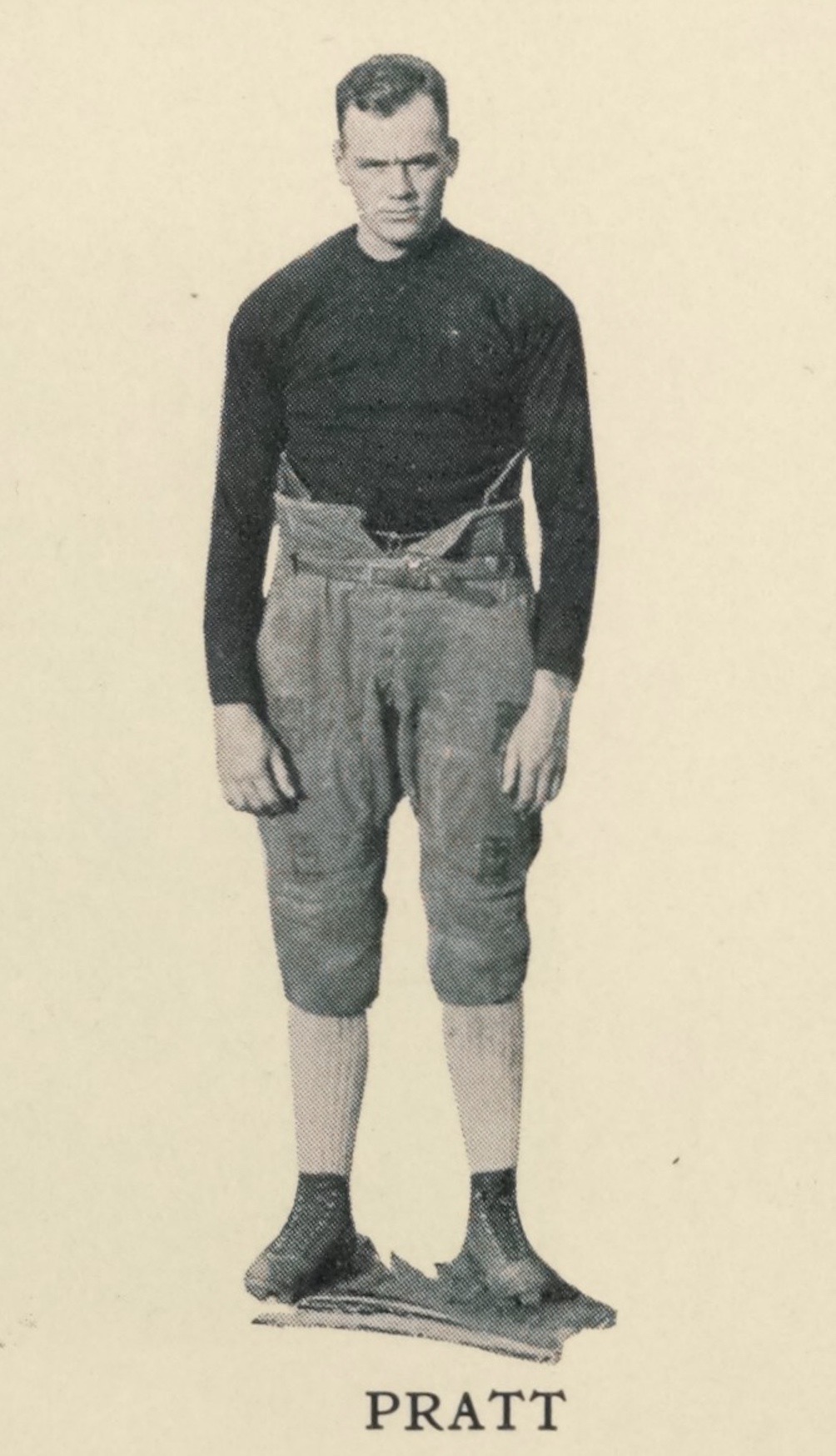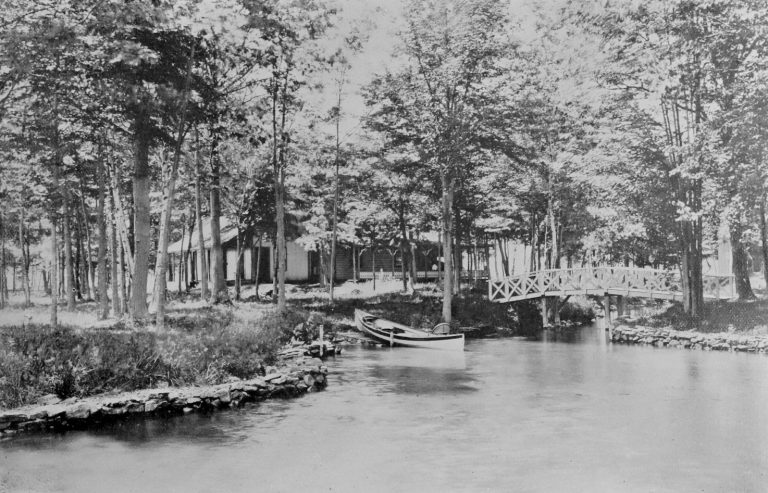John “Jack” Walter Wood III Designed and Built Childhood Friend Sherman Pratt a Modern, Ferro-Concrete Home on Niagara Island in 1930
Tucked away in the group of islands on the Canadian side of Grindstone Island, Niagara Island is home to the Sherman Pratt cottage, a sleek and modern villa. Designed and constructed in 1930 by Pratt’s childhood friend John “Jack” Walter Wood III, the home was hailed by architects as a modern, fire-proof structure that, in the words of Augusta Owen Patterson, who wrote about it in the April 1932 Town & Country magazine, “was new, good-looking, eminently practical. And it appealed to the imagination.”

Born on March 22, 1900, Sherman Pratt was the grandson of businessman and philanthropist Charles Pratt, a pioneer of the oil industry, forming the Charles Pratt and Company with Henry Rogers in the late 1860s, later becoming part of John D. Rockefeller’s Standard Oil in the mid-1870s. As an advocate of education despite never attending college, Charles Pratt founded the Pratt Institute in Brooklyn, New York, in 1887 and funded it.
The following year, Scientific America called the school “one of the most important enterprises of its kind, if not the world,” drawing the attention of Andrew Carnegie, who was inspired by the achievement and created his own Carnegie Technical Schools, now known as Carnegie Mellon University.

Charles Pratt died in 1891, aged 60, nine years before Sherman Pratt was born. Sherman’s father, George Dupont Pratt, had his own successes, having attended Amherst College, where he was an outstanding athlete who participated in both track and field and as quarterback for the school’s football team, where he was named captain in 1892.
George eventually helped organize the Boy Scouts of America. He served as its treasurer while also serving as the Vice President of the Pratt Institute and President of the American Forestry Association. He married his wife, Helen Deming Sherman Pratt, in 1897, and three years later, Sherman Pratt was born.

Sherman followed in his father’s footsteps, attending Amherst College in 1927, where he also played football. A lifelong sportsman and explorer, he co-founded Florida’s Marineland, the world’s first oceanarium. Sherman made numerous documentary films concerning nature and gave them to museums.
As a bachelor in 1929, Sherman Pratt purchased land on Niagara Island. As an avid outdoorsman, the Thousand Islands seemed to be a perfect match with their isolated islands’ natural beauty. Henry H. Saylor wrote in his piece, A Ferr0-Concrete House of To-Day, for Architecture in 1932, some of the requirements sought for Sherman Pratt’s summer home–
Here is a house for Mr. Sherman Pratt, at Niagara Island, Ontario. Mr. Pratt is a bachelor who wanted, for an isolated site on one of the Thousand Islands, a house that would be fireproof, that would require a minimum of upkeep, that would express as nearly as might be the simplicity of life upon such an island, and, finally, that would be economical in construction.

Jack Wood, a long-time childhood friend of Pratt’s, designed the house and then built it for the better part of a year. The isolated location presented a challenge of its own. More importantly, being on-site for its construction allowed Wood to assess and make changes on the fly during the process, helping make it economical and functional.
Augusta Owen Patterson wrote in their article, A Monolithic House in Ontario, for Town & Country’s April 1932 edition–
Several architects I know have been wanting to build a house consistent to the airplane and dirigible and radio era.
In achieving the result which has won him the commendation of the majority of the members of his profession, the architect of Mr. Pratt’s house has not been content merely to make an effective plant, to calculate the exactness of the sensation possible to blocking out areas which would chisel against the full light and areas which would do the right thing in shadow.

Including the basement, the summer home has four levels. The basement has a game room, wine cellar, boiler room, storage closet, and laundry room.
The first floor has a spacious living room, a small study, a grand hall, a coat closet, a dining room, a kitchen, and a maid’s room. The winding staircase is near the center of the hall, leading up to the second floor and the tower. On the second floor are three dressing rooms, each with its own sleeping porch. The stairs then circle their way up to the tower room overlooking the terraced roofs. A hatchway leads to the tower’s own roof.

Saylor ended his article in Architecture by stating–
Mr. Wood’s house for Mr. Sherman Pratt is, in my opinion, an unmistakable milestone along the architectural highroad leading from the recent Babel of Tongues to something ahead of us—something in which clear logic and beauty are once more happily wedded.
Not much of Sherman Pratt appeared in local newspapers over the years, but one interesting bit was he employed Harry Cook as his caretaker (though an article apparently misidentified Sherman Pratt as Jack Pratt of Niagara Island). Harry Cook was instrumental in overseeing the creation and operation of three outdoor ice skating rinks in Watertown during the 1930s.

At one point, there was a discussion of turning Building ‘C’ of the New York Airbrake into an indoor ice rink that may draw college games. Cook met with William J. Graf, then Superintendent of Municipal Recreation in Watertown, to discuss plans. A Gananoque, Ontario resident who ran outdoor rinks in Canada, Cook said there was nothing of the like in his area. Sherman Pratt visited the site on Starbuck Ave., within walking distance of the Starbuck Arena, where Sugar Ray Robinson earned his nickname, and believed it would be an ideal location. The building was enclosed and able to protect skaters from the cold and wind while maintaining the ice. Alas, the project never came to fruition.
As for Sherman Pratt, he went on to marry Ethel B. Schniewind, formerly Manville, from a previous marriage, in 1942 and had a daughter, E. Deming Pratt. Sherman Pratt served in WWII as a Lt. Commander in the United States Navy. He passed away from a heart attack and stroke at the age of 64 in London, England, on September 14, 1964.
















